Solitaire is a type of card game that one player can generally enjoy. To start a game of Solitaire, you deal the cards in a particular order to a specific layout. Since Solitaire is a type of game, not one game, in particular, most Solitaire games have a different layout and setup.
Introducing Solitaire: How to set up a game of Solitaire
Before we go over the different Solitaire setups, it’s essential to know the object in most Solitaire games: complete the layout and play all cards to a particular “end location,” often called the Foundation. When a player manages to take all cards from the layout (also called the Tableau), the player wins or completes the game. You can only move cards based on specific rules; these vary between games of Solitaire. For more information about the rules, we advise you to read our article with the basic info on Solitaire Rules, where you learn how to play Solitaire step-by-step.
Solitaire Terms and Glossary relating to the setup
To understand the various diagrams it’s important to know what word means that are used to point out the various elements of the Solitaire setup.
Stockpile
The deck of cards left over from dealing the layout. These cards are available to turn over to the Waste Pile to bring into play.
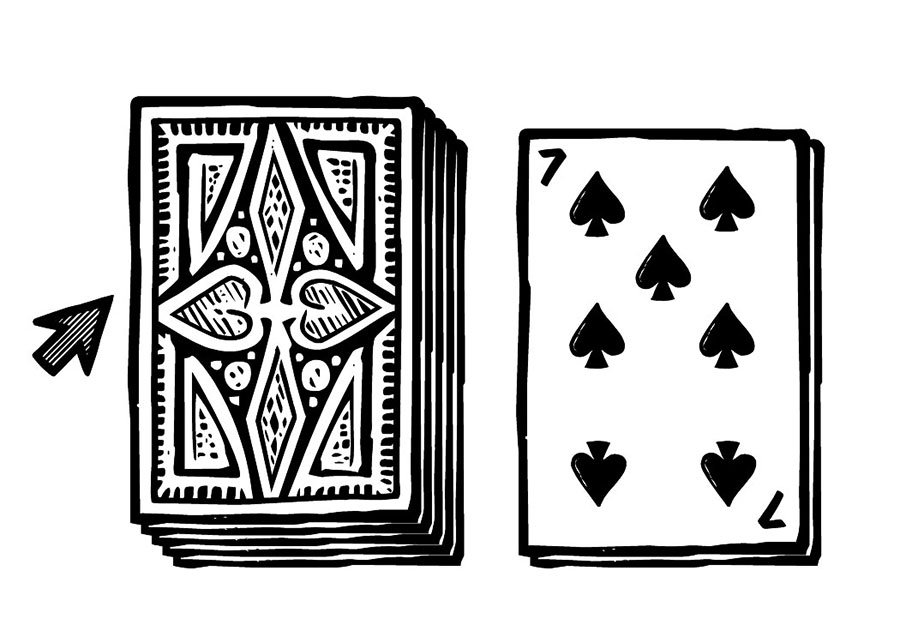
Waste Pile
When you turn your card over from the Stockpile, you expose the top card and place it face-up onto the Waste Pile. This is a pre-marked space on the layout. Depending on the rules, you must turn 1 or 3 cards simultaneously. In case you turn three, only the top (exposed) card (from the Waste Pile) can be brought into play.
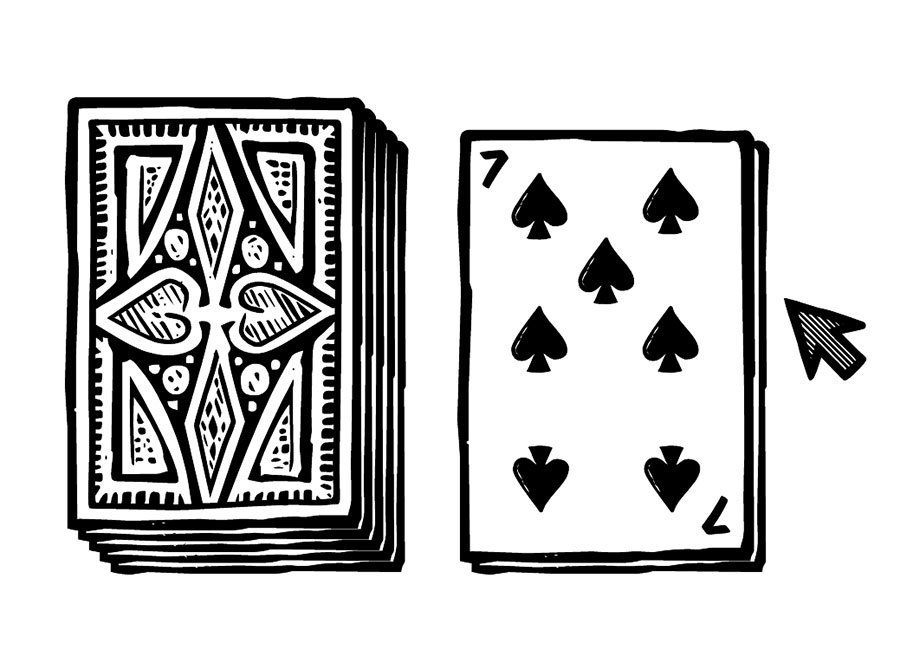
Turn One (Draw 1)
When this rule applies, you turn a card from Stockpile to Waste Pile one at a time. For more information read more about Solitaire Draw One
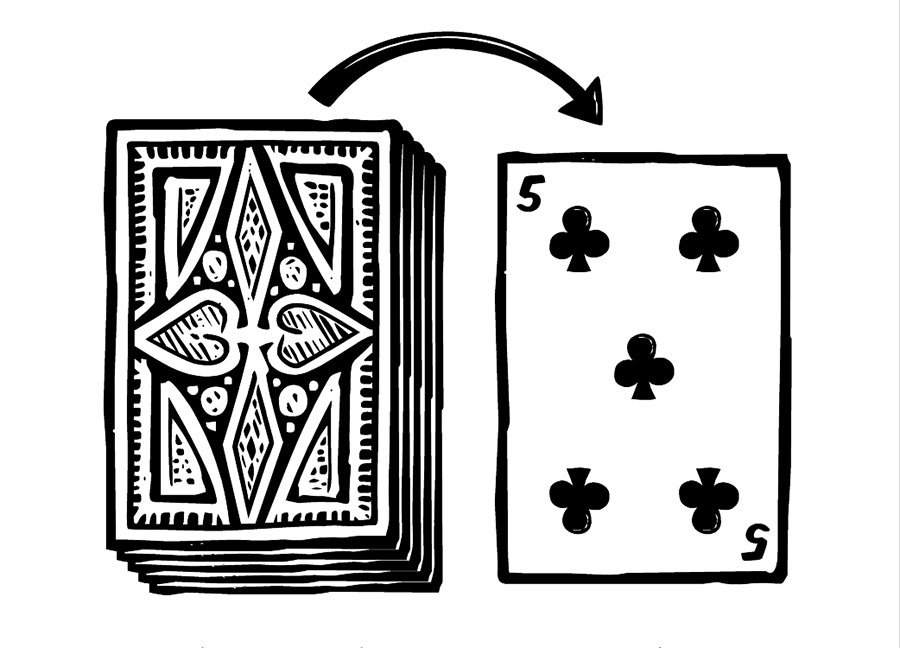
Turn Three (Draw 3)
When this rule applies, it means that when you turn a card from Stockpile to Waste Pile, it goes by three cards at a time. With this rule, you are only allowed to play the top card of the three. When you play the top card, the second will be exposed and free to play. For more information read more about Solitaire Draw Three
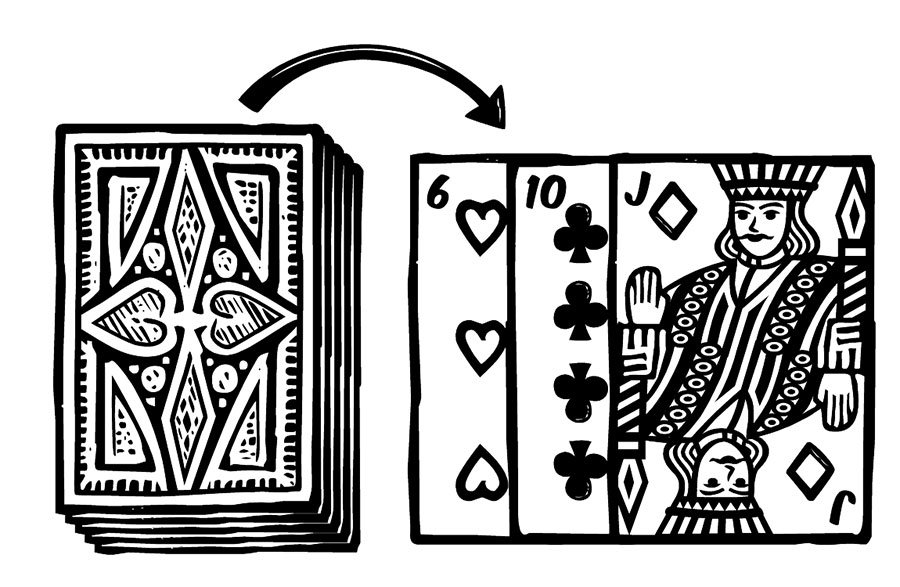
Re-deal
When you have gone through all cards of the Stockpile, in some cases, you are allowed to go through the pile again. This is called a re-deal. Depending on what rules apply, re-deals are often none, two, or unlimited. Having two re-deals means you can go through the Stockpile 3 times in total.
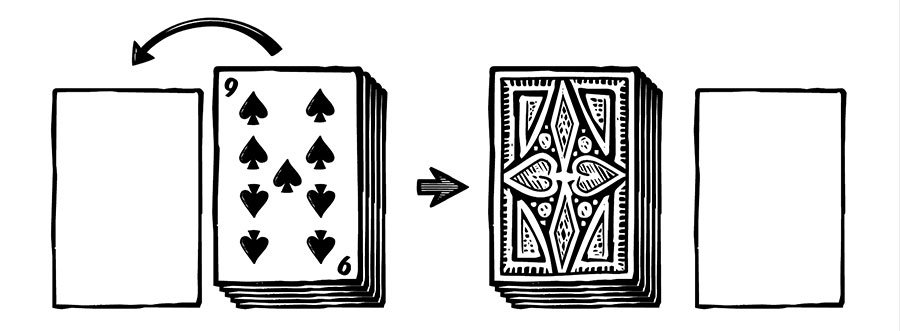
Column
An empty place is often indicated by an outline to show where the card should be placed. Also, “column” is often used interchangeably with a row, and the same rules apply.
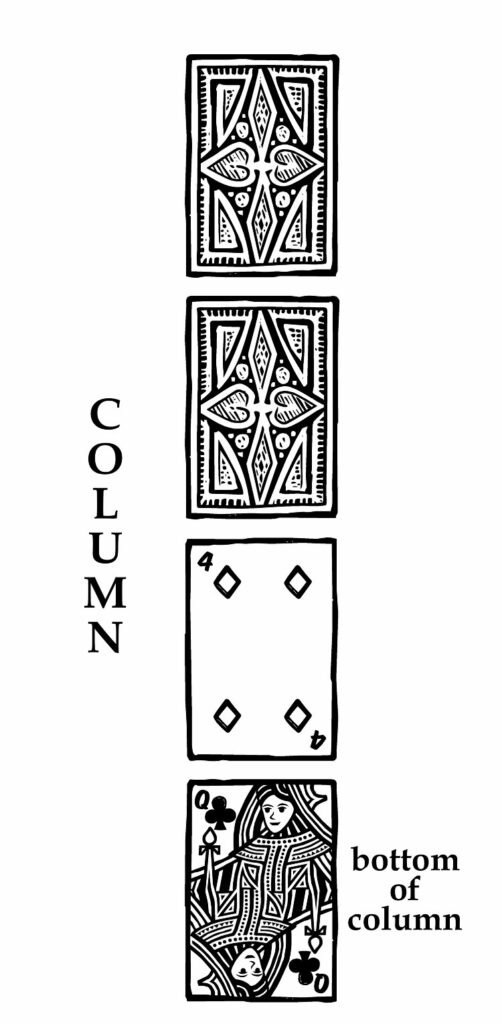
Foundation
The Foundation often consists of 4 columns pre-marked on the layout. Here you need to build your entire deck of cards in order to complete the Solitaire. Not all forms of Solitaire use Foundations, but when they do, the Foundation is the place where you need to build your cards based on sequences and suits as indicated by the rules of the particular game.
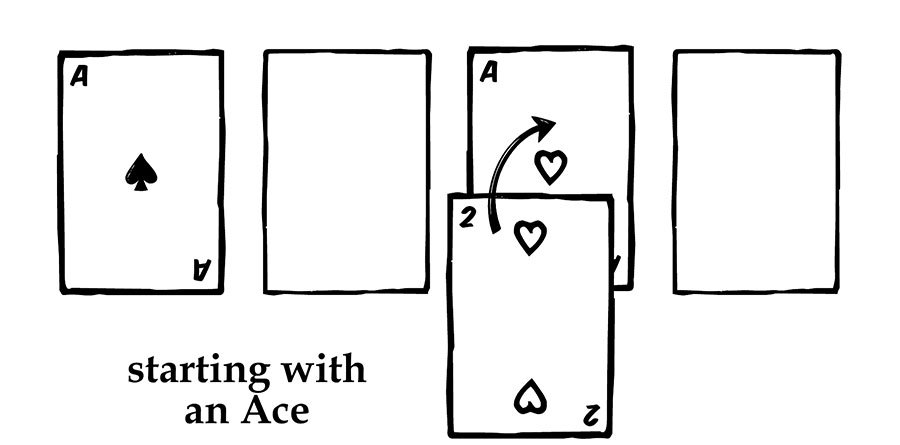
Tableau
The Solitaire layout always consists of, among other things, a Tableau. The Tableau is the playing field from where you have to move cards to expose new cards. These so-called face-up cards are now available to play. To complete a game, you must reveal all the cards and play them in sequences to the Foundation.
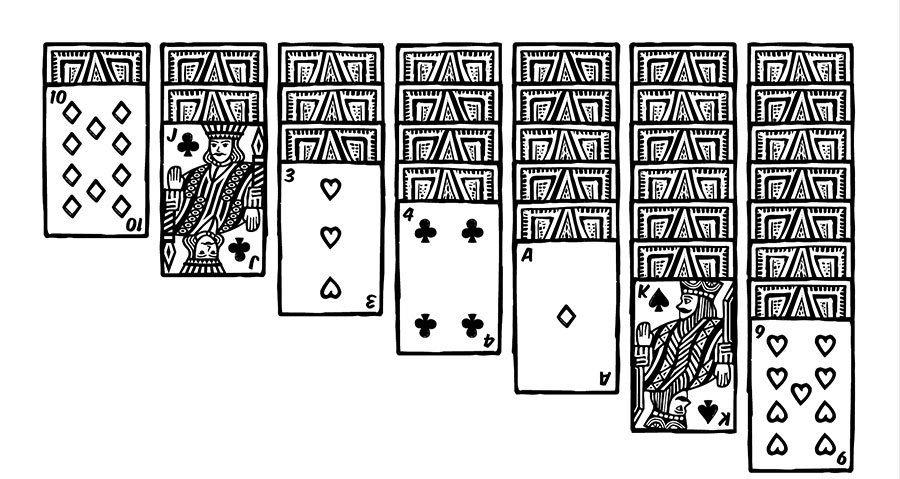
Row
When cards are dealt next to each other, we call it a row. For example, the Tableau of the Vegas Solitaire setup is dealt over seven rows. A row is dealt from left to right. The cards are dealt in the row so that the card underneath will be visible (10-15% of the card, so when the card underneath has been previously exposed or played, and you have built upon it with another card, you can see the Suit of the card. The fact that the card is underneath another card means the card is blocked for play.
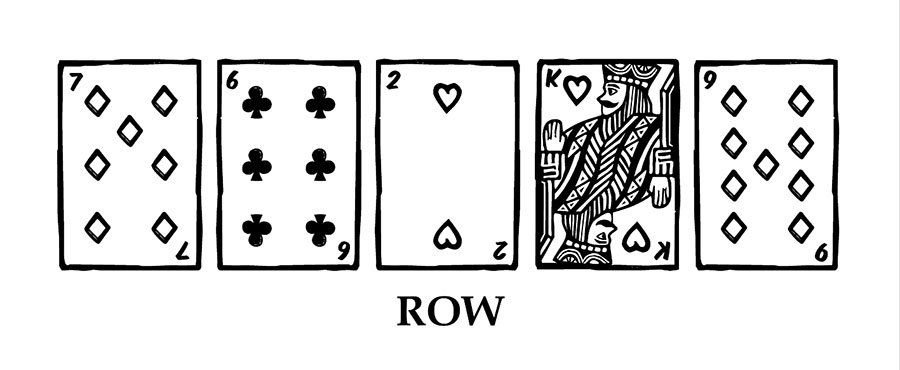
Empty Space
When you manage to clear a complete row in the Tableau, you will have created an empty space. In Vegas Solitaire, an empty space may only be filled with a King or a row starting with a King.
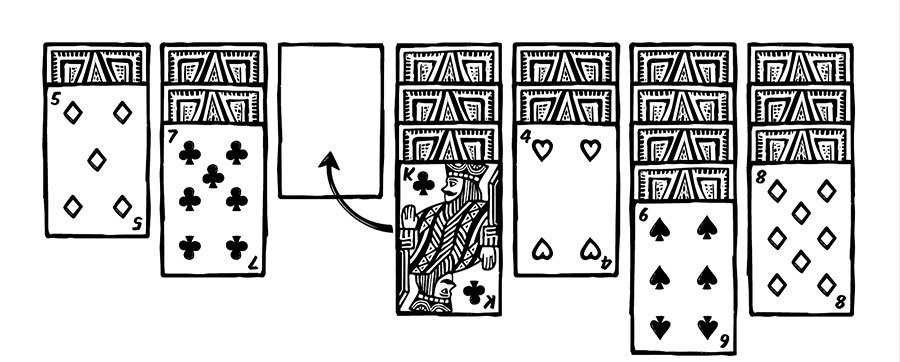
Layout
The layout is another word for the setup of Solitaire. Many different Solitaire games are dealt in different ways where a fixed number of cards is dealt in a particular order in a specific pattern. This pattern is called the layout.
Closed Card
When the card is face-down, you see the back of the card.
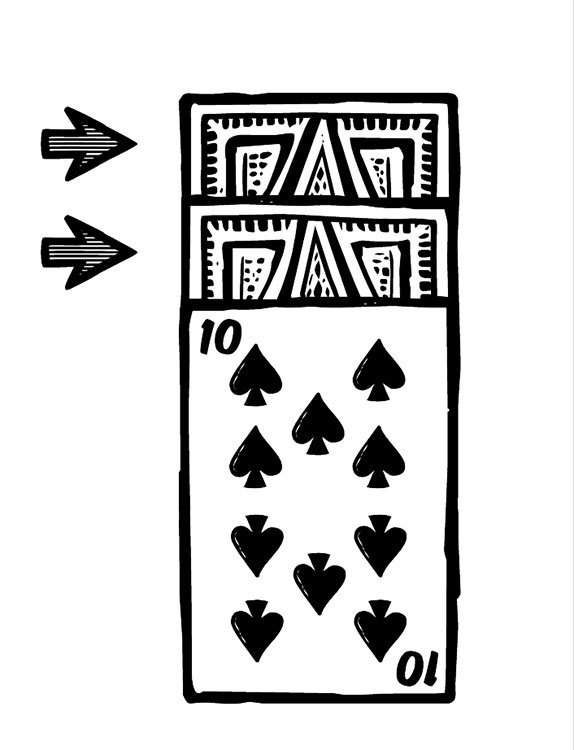
Open Card
The card is face-up, with the symbol or Suit in sight.
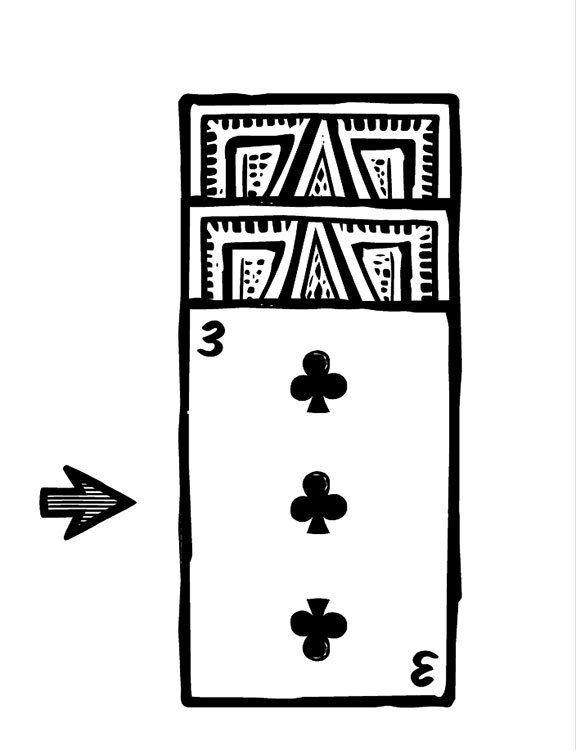
Blocked card
When there is a face-up card on top of another card, the card beneath it is considered “blocked” for play. In order to unblock it, you need to play the card on top of it.
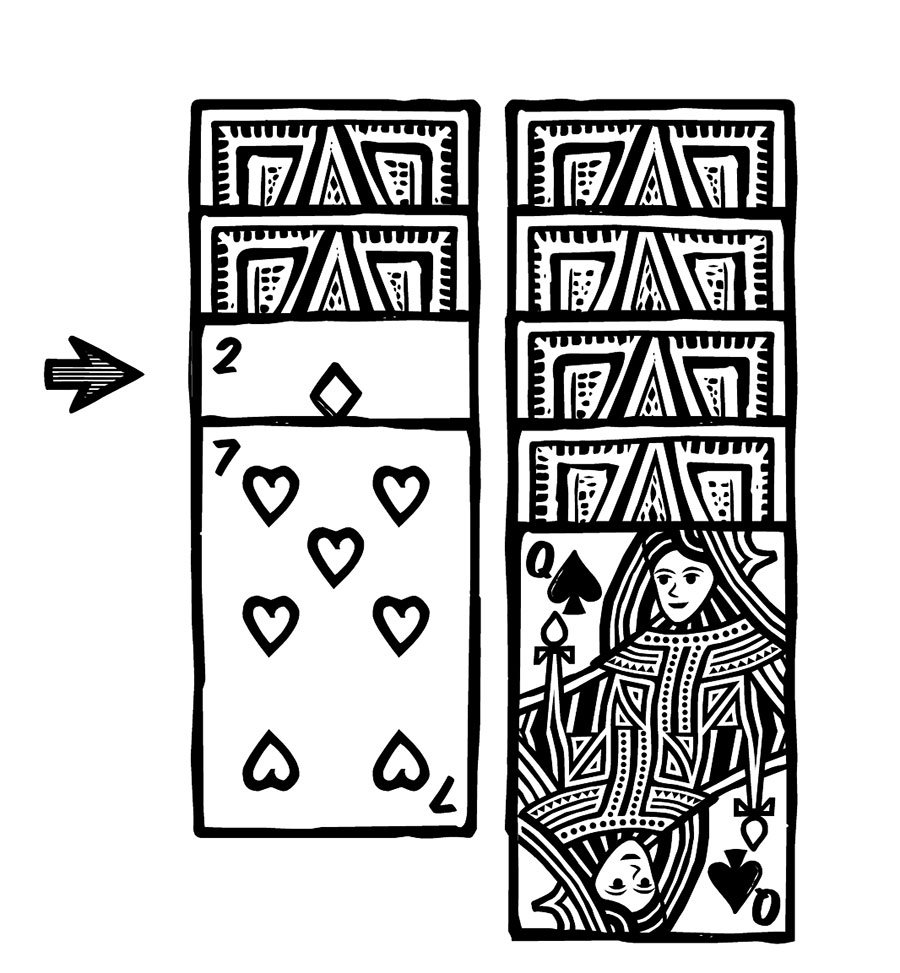
Exposed Card
When a card is dealt face down and blocked by another card, you can expose the card by playing the top card or cards in a row. When you have moved the card on top, you can turn over the next card and bring it into play. You can also expose a card by moving part of a row to another.
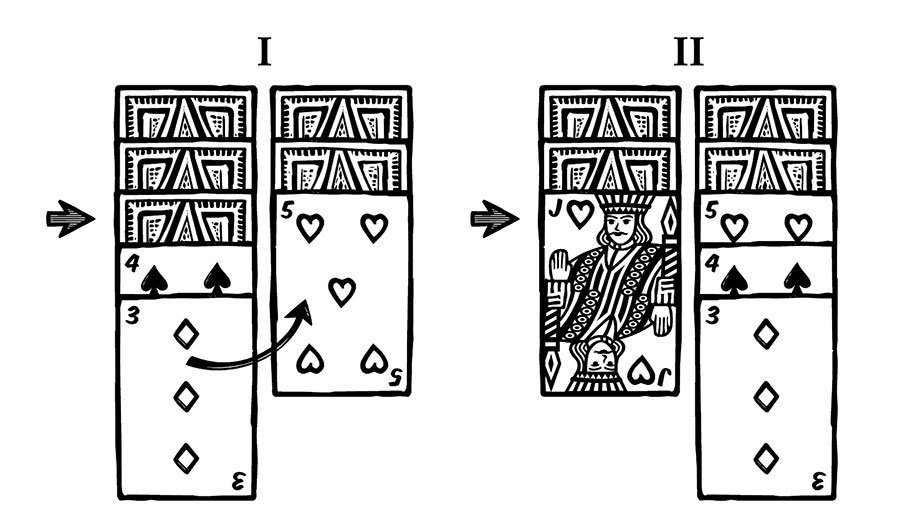
Sequence
Rules regulate the placement and play of cards. You must place cards in a fixed sequence from Ace to King or vice versa from King to Ace, often also considering the order or alteration of the different suits. For example, when you have a King of Hearts open, you can only place a black queen on top of it, be it
spades or clovers. In many Solitaires, this sequence is continuous, meaning you can play an Ace on top of a King or the other way around.
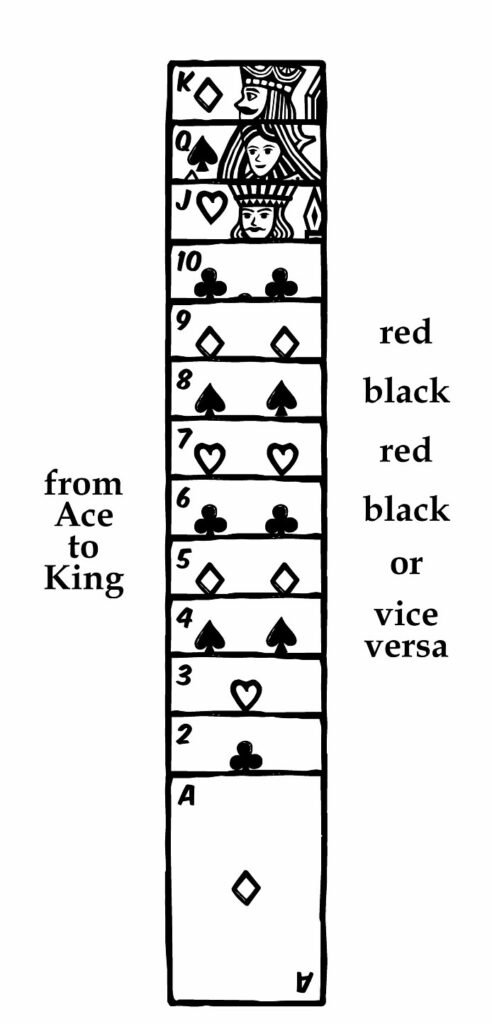
Marriages
Creating a row where only two suits, one red and one black, comprise the row. For instance, only red hearts and black spades. Another name used for this strategy is “Family Tree.”
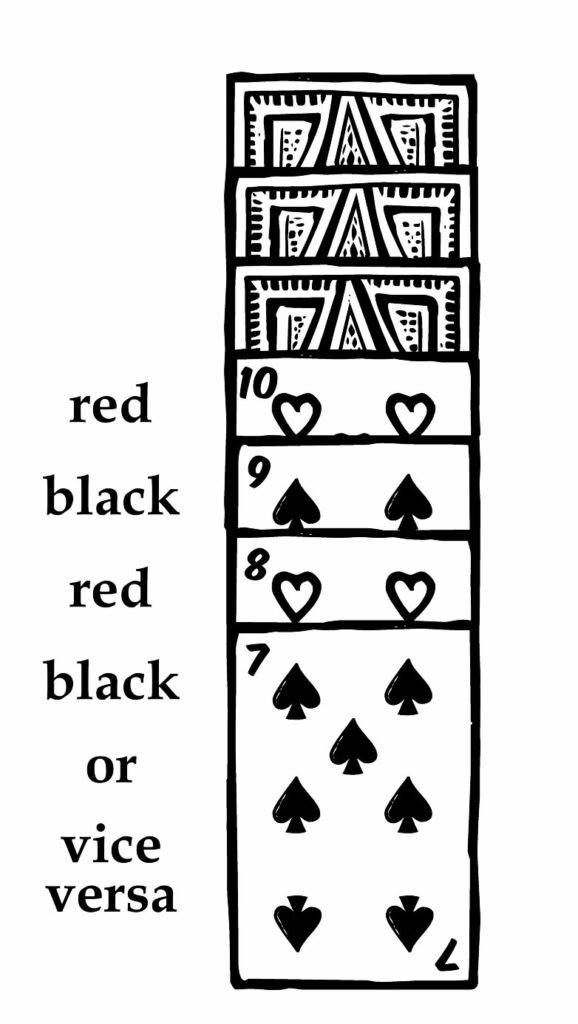
Suits
A standard deck of cards consists of four suits: hearts, diamonds, spades, and clovers. Each Suit consists of 13 cards which are arranged in a specific order: Ace, 2, 3, 4, 5, 6, 7, 8, 9, 10, Jack, Queen, King.
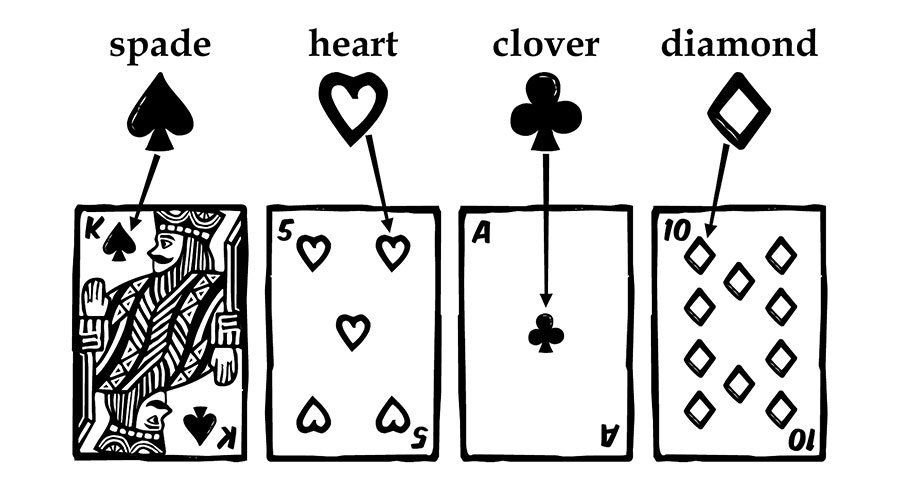
Symbol
A symbol is just another word that is often used for Suit.
Talon
Officially the Talon is the original name for Waste Pile. However, the Talon is often confused with the Stockpile and used interchangeably. In all our rules, we only use Stock or Stockpile and Waste Pile.
Families
With families, we mean when the cards are played to the Foundations in the correct order and sorted by Suit.
Play or move a card
When you play or move a card to the Foundations or another place on the layout.
Solitaire Wiki How to Setup
The majority of Solitaire players are only familiar with one type of Solitaire, Klondike. But there are many more Solitaires, all with a different setup.
Underneath, we have listed the most played Solitaires with a summary of how to set up the cards and form the Tableau.
Underneath the setups of the most played Solitaires:
Klondike Solitaire Setup
Klondike Solitaire, you play with one deck of 52 cards, excluding the Jokers.
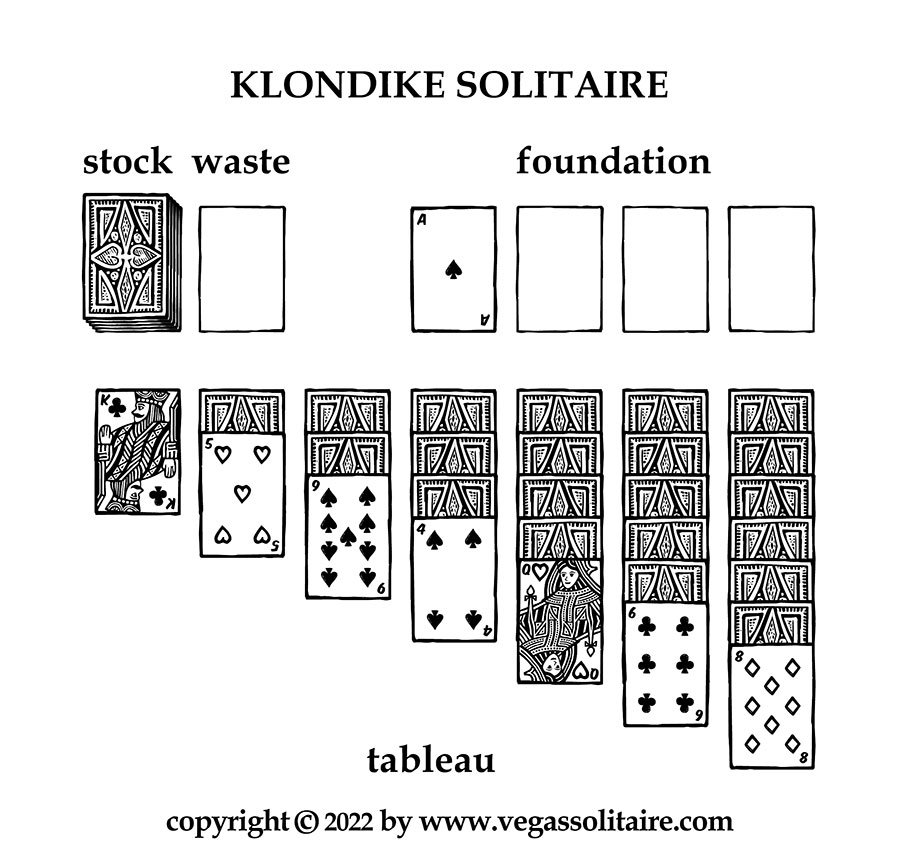
- 28 Cards are dealt over seven rows to form the Tableau.
- Foundation consists of 4 empty columns, one for every Suit (hearts, clovers, diamonds, spades)
- Stockpile 24 cards
- Waste Pile
- Depending on the game, Klondike Solitaire Draw one or Draw 3; you turn 1 or 3 cards each time you turn a card from the Stockpile to the Waste Pile.
Canfield Solitaire Setup
You play Canfield Solitaire with one deck of 52 cards without the jokers
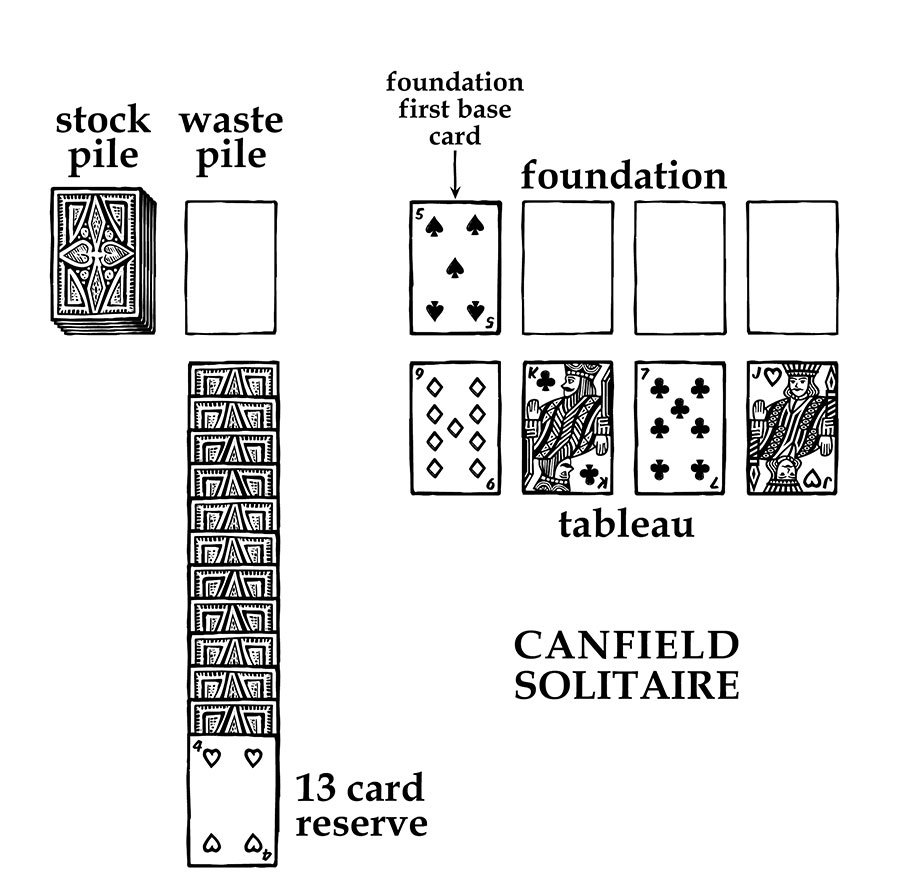
- The first 13 cards are taken and form the “reserve.” This is a row of cards with the top-most card exposed.
- The 14th card is then dealt to the top as the Foundation’s first card. This card is random and indicates the other Foundation cards for your particular gameplay. So if the 14th card is a 6, then the other Foundations must also start with a 6.
- The following four cards are dealt side by side in 4 rows next to each other, face up. These four cards form the Tableau.
- Stockpile 35 cards (faced down)
- Waste Pile (empty column at the start)
Spider Solitaire Setup
Standard Spider Solitaire, you play with two decks of cards without the jokers for 104 cards. The Spider Solitaire setup is different from most games because the Waste Pile is not part of the Spider Solitaire setup. This obviously affects the rules of the game.
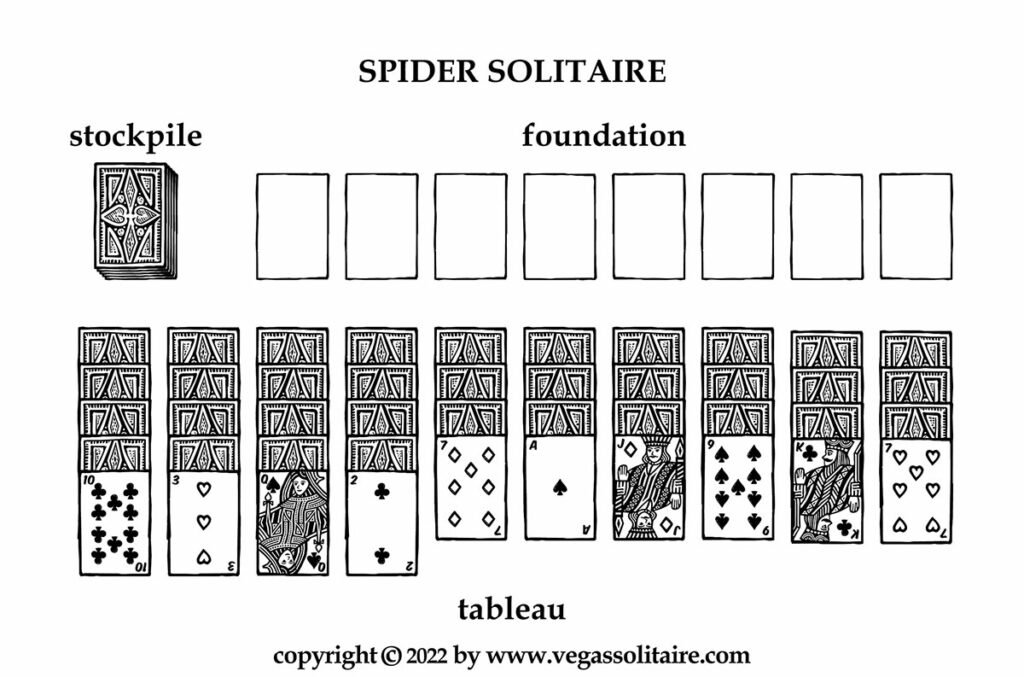
- The first 54 cards are dealt one at a time from left to right and spread over ten rows. When this is done correctly, you end up with ten rows, of which the left four consist of 6 cards and the other six consist of 5 cards. All cards must be face down except the final card of each row which must be dealt face up. These ten rows of 54 cards make up the Tableau.
- Foundation consists of a wide column in which only entire families can place at once.
- The Stockpile consists of the remaining 50 cards.
- There is no Waste pile in the Spider Solitaire Setup.
Freecell Setup
Freecell Solitaire, you play with a deck of 52 cards, with the jokers left out. Free cell is another form of Solitaire with a unique layout and set of game rules.
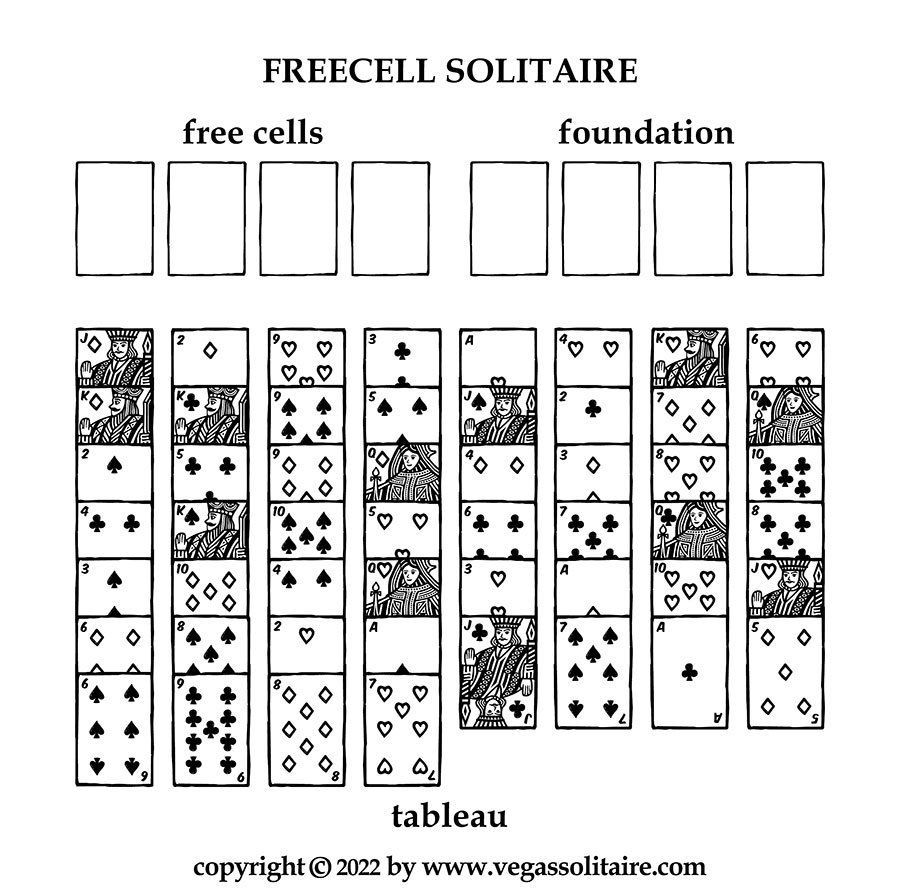
- All 52 cards are dealt openly over eight rows so that the first four rows consist of seven cards each, and the second four rows consist of 6 cards per row.
- On top of the eight rows are ten empty columns
- The right four columns are the Foundations, one column for every Suit
- The left four columns are the free cells, and here, you can randomly place four cards in order to expose other cards on the Tableau. Every Freecell can hold one card each.